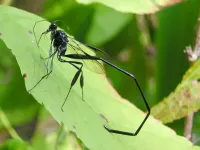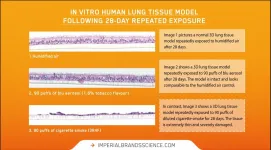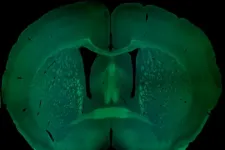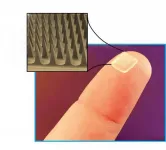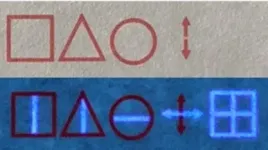Coalitions and conflict among men
In the Bolivian Tsimané, who supports who is affected by physical size, social status, and existing cooperative and antagonistic relationships
2021-05-05
(Press-News.org) Daniel Redhead, from the Max Planck Institute for Evolutionary Anthropology, and Chris von Rueden, from the University of Richmond, published a new study that describes coalition formation among men in Tsimané Amerindians living in Amazonian Bolivia, over a period of eight years. In two Tsimané communities, the authors describe the inter-personal conflicts that tend to arise between men, and the individual attributes and existing relationships that predict the coalitional support men receive in the event of conflicts.
Conflicts that arise between men concern disputes over access to forest for slash-and-burn horticulture, as well as accusations of theft, laziness, negligence, domestic abuse, and sexual affairs.
Men tend to reciprocate coalitional support
Key findings are that men who are kin or who exchange food and labor are more likely to subsequently provide support to each other in the event of a conflict. Men tend to reciprocate coalitional support over time, and an ally of a man's current ally is likely to become a future ally. The authors also find evidence that men who share a common adversary become allies, though this finding did not hold consistently across the eight years of the study.
In reference to the impact of these findings, Redhead, said: "Coalition formation among men is multiply determined in the Tsimané, and likely in other human societies. Importantly, the social network analyses we used show that properties of the network, not just the individual, affect coalition formation."
Higher status men more likely to provide coalitional support
Furthermore, Tsimané men who are physically formidable or who have more informal influence in their community are more likely to provide coalitional support to others. Evidence was mixed that they receive more coalitional support. These higher status men are hubs of their community's coalitional support network, and there is little indication that this network is partitioned into clearly separable coalitions that divide the community.
"In the Tsimané, men who have higher informal status strategically deploy coalitional support to build up a diverse, community-wide following. In many cases, both disputants in a conflict will report the same higher status man as having provided coalitional support, which points to the often blurry line between coalitional support and conflict mediation", von Rueden said. "Politics is the art of persuading enough people you have their interests at heart. In less egalitarian societies where there is more privately available wealth and community sizes are larger, status is less contingent on providing direct support to a broad swath of community members, there is greater homophily by status, and coalitional divides within a community are more likely to be pronounced."
Redhead and von Rueden focus their study on men because they at present lack longitudinal data on women's coalition formation. However, there is reason to analyze coalition networks separately by gender, given evidence of gender differences in how men and women build and leverage their social relationships, particularly in societies like the Tsimané where there is a pronounced gendered division of labor.
INFORMATION:
Original publication:
Daniel Redhead and Christopher R. von Rueden
Coalitions and conflict: A longitudinal analysis of men's politics
Evolutionary Human Sciences, 05 May 2021, https://doi.org/10.1017/ehs.2021.26
Contact:
Dr. Daniel Redhead
Max Planck Institute for Evolutionary Anthropology, Leipzig
+49 341 3550-338
daniel_redhead@eva.mpg.de
Dr. Christopher R. von Rueden
Jepson School of Leadership Studies, University of Richmond
+1 804 287-6098
cvonrued@richmond.edu
[Attachments] See images for this press release:
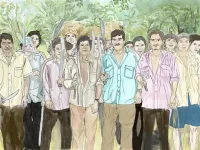
ELSE PRESS RELEASES FROM THIS DATE:
2021-05-05
In about a quarter of patients with hereditary diseases, the cause of the disease remains unclear even after extensive genetic testing. One reason is that we still do not know enough about the function of many genes. Of the 30,000 known genes, just a little more than 4,000 have been found to be associated with hereditary diseases.
At the Department of Clinical Genetics of the University of Tartu Institute of Clinical Medicine, under the leadership of Professor Katrin Õunap, patients with hereditary diseases of unclear cause have been studied in various research projects since 2016. In collaboration with the Broad Institute of MIT and Harvard, these patients have undergone extensive genome-wide sequencing analyses at the level of the exome (the sequence of all genes), ...
2021-05-05
Knowing what species live in which parts of the world is critical to many fields of study, such as conservation biology and environmental monitoring. This is also how we can identify present or potential invasive and non-native pest species. Furthermore, summarizing what species are known to inhabit a given area is essential for the discovery of new species that have not yet been known to science.
For less well-studied groups and regions, distributional species checklists are often not available. Therefore, a series of such checklists is being published in the open-access, peer-reviewed Journal of Hymenoptera Research, in order ...
2021-05-05
5 May 2021, Bristol - In one of the most advanced applications of in-vitro 3D human lung models in vape research to date, a new peer-reviewed Imperial Brands study shows that, unlike combustible cigarette smoke, blu aerosol had little to no impact on numerous toxicological endpoints under the conditions of test using laboratory models.
Published in the journal Current Research in Toxicology, the experiments compared the toxicological responses of an in vitro 3D lung model (MucilAir™ from Epithelix) after repeated exposure to undiluted whole blu aerosol (1.6% tobacco flavour) or diluted whole cigarette smoke (3R4F Kentucky Reference) over a 28-day period.
After repeatedly exposing the model to ...
2021-05-05
Announcing a new article publication for BIO Integration journal. In this editorial the authors Hui Liu and Juan Chen from Shanxi Eye Hospital, Taiyuan, China discuss biophotonics in photomedicine.
As a cross-disciplinary field, biophotonics is a natural platform for innovation, e.g. researchers have taken advantages of the recently developed nanostructures in Photomedicine to optimize imaging signals and improve drug delivery efficiency. Active investment in healthcare also contributes to the quick clinical transitions of biophotonic innovations.
However, to genuinely and successfully improve people's lives, many gaps have to be bridged. Horizontally, ...
2021-05-05
After reviewing a database of gene mutations in children with autism spectrum disorder (ASD), a team of Medical University of South Carolina (MUSC) researchers decided to study a specific gene mutation that likely caused ASD in a girl. They demonstrated that the mutation was damaging to the gene, and that female, but not male, mice lacking a working copy of the gene also showed ASD-associated symptoms. Better understanding the interplay between genetics and sex in ASD could set the stage for developing sex-specific treatments for autism.
The MUSC team was led by Christopher Cowan, Ph.D., the William E. Murray SmartState Endowed Chair in Neuroscience and chair of the Department of Neuroscience, and Ahlem Assali, Ph.D., research assistant ...
2021-05-05
A recent study from the University of Helsinki monitors the breakthrough progresses in the development of microneedles for immunotherapy and discusses the challenges regarding their production. Researchers suggest using microneedles for immunotherapy due to the high abundance of immune cells under the skin. The aim is to vaccinate or treat different diseases, such as cancer and autoimmune disorders, with minimal invasiveness and side effects.
"Our study addresses the recent achievements in the development of microneedles for immunotherapy of hard-to-treat and chronic diseases to achieve the highest efficiency with minimal side effects," says ...
2021-05-05
There is currently no consensus on what quality end-of-life care for children with cancer looks like, or how to measure and deliver it; however, investigators recently assembled an expert panel to help fill this void. In a study published early online in CANCER, a peer-reviewed journal of the American Cancer Society, the panel endorsed 16 measures that cover different aspects of care that are important for children with cancer and their families.
"Measuring the quality of the care delivered is an essential part of ensuring high quality end-of-life care ...
2021-05-05
Coded messages in invisible ink sound like something only found in espionage books, but in real life, they can have important security purposes. Yet, they can be cracked if their encryption is predictable. Now, researchers reporting in ACS Applied Materials & Interfaces have printed complexly encoded data with normal ink and a carbon nanoparticle-based invisible ink, requiring both UV light and a computer that has been taught the code to reveal the correct messages.
Even as electronic records advance, paper is still a common way to preserve data. Invisible ink can hide classified economic, commercial or military ...
2021-05-05
Marine scientists are calling on the EU to adopt a comprehensive plan to protect dolphins and porpoises from fisheries bycatch in European waters.
A team of conservation experts, including Newcastle University's Professor Per Berggren, highlight limitations in EU's efforts to address and mitigate bycatch. The scientists argue this infective response is a result of scattered and complicated management responsibility for the conservation of dolphins and porpoises in Europe, and from a lack of quantitative conservation objectives, including biological reference points ...
2021-05-05
Reflexes protect our bodies - for example when we pull our hand back from a hot stove. These protective mechanisms could also be useful for robots. In this interview, Prof. Sami Haddadin and Johannes Kühn of the Munich School of Robotics and Machine Intelligence (MSRM) of the Technical University of Munich (TUM) explain why giving test subjects a "slap on the hand" could lay the foundations for the robots of the future.
In your paper, published in Scientific Reports, you describe an experimental setup where people were actually slapped on the hand - to study their reflexes....
Kühn: Yes, you can put it that way. For our study, in cooperation with Imperial College London, the test ...
LAST 30 PRESS RELEASES:
[Press-News.org] Coalitions and conflict among men
In the Bolivian Tsimané, who supports who is affected by physical size, social status, and existing cooperative and antagonistic relationships


